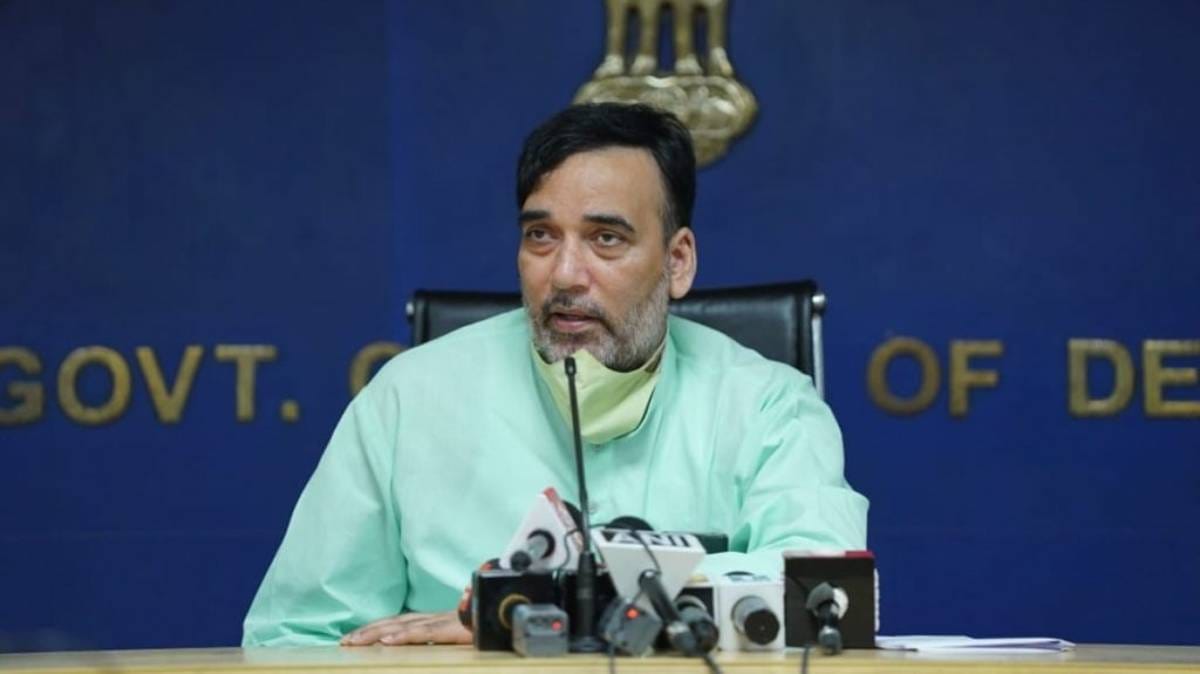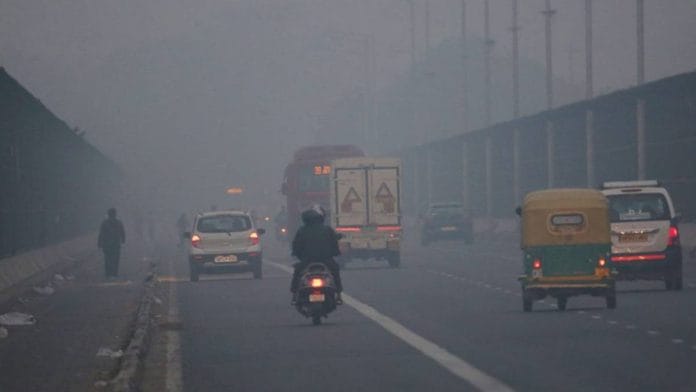New Delhi: The Aam Aadmi Party seems to have lost faith in its flagship ‘odd-even’ scheme and plans to resort to the formula only in case of an “emergency”, Delhi’s Environment Minister Gopal Rai has told ThePrint in an interview.
Gopal Rai said the Arvind Kejriwal-led government’s priority is to focus on other measures and implement them successfully, increase public participation in Delhi’s fight against air pollution, and also focus on technology. “The government will take a call on implementing odd-even if things get serious,” he said.

The odd-even formula — under which private cars with number plates ending in odd numbers are allowed on roads odd dates and vice-versa (with some exemptions) — was introduced in 2016 to help bring down vehicular pollution in the city during peak pollution period in winter. Air quality in the national capital remains particularly poor between October and February.
This vehicle rationing policy has received praise worldwide, and Fortune magazine had named Arvind Kejriwal among the 50 greatest leaders in 2016, specifically praising the Delhi government’s odd-even formula.
Also read: Coal expansion could cause over 52,000 premature deaths in India in 10 years, study says
The battle against pollution
Although Delhi’s air quality is a matter of concern all year long (three times worse than the national average), at the onset of winter, things get especially worse. Much of the pollution is blamed on stubble burning in states around the national capital at this time of the year, and the lower temperatures which cause suspended pollutants to settle closer to the surface.
The AAP government has launched various measures to battle pollution. Billboards put up across Delhi feature CM Kejriwal declaring war on air pollution with the “Yuddh, pradushan ke viruddh” campaign.
One can also find volunteers scattered across traffic signals urging drivers to follow the “red light on, gaadi off” policy, under which commuters are encouraged to turn car engines off while they wait for the signal to turn green.
While these measures may seem like temporary solutions, Gopal Rai justified the drive saying, “on average, a commuter passes 12-13 signals in Delhi. That means on an average they are wasting 30 minutes of fuel. Now imagine if they save fuel for these 30 minutes, would that be a bad thing? According to a report on petroleum conversation, if all cars turned their engines off at signals, that would lead to pollution reduction by 13 per cent”.
The minister also showed a lot of confidence in the bio-decomposer that the Delhi government has developed as an alternative to stubble burning, which has been termed a contributor to the smog cover in Delhi during this time.
Rai said while the Delhi government has sprayed the decomposer in farms in an area of about 2,000 acres in and around Delhi, the same hasn’t happened in other neighbouring states. “We handed over a report on the bio-decomposer to the Commission for Air Quality Management. We also got a third party audit of findings by a central government agency, and sent it to the Centre as well. And yet, if the decomposer hasn’t been adopted, it shows that the Centre hasn’t made a ground action plan, because of which stubble burning continues to pose danger (to air pollution levels in Delhi),” he said.
Rai also said the government is monitoring the smog tower set up at Baba Khadak Singh Marg. “The smog tower is currently working on pilot basis. IIT Bombay and IIT Delhi are currently working to assess if it’s helpful or not. But if we talk about firsthand, on-ground report, we can observe that the tower is reducing PM 2.5 in the air by about 60-70 per cent,” the minister said.
A study by the Council On Energy, Environment And Water (CEEW) found that open fires (including stubble burning) accounted for around 30 per cent of air pollution in Delhi from October to November 2020. Household emissions (cooking etc) accounted for 24 per cent of pollution from November to December, and 36 per cent from December 2020 to January 2021. Vehicular emissions contributed 17–28 per cent to Delhi’s PM2.5 levels (TERI and ARAI 2018), the study had said.
(Edited by Poulomi Banerjee)
Also read: Delhi has two smog towers, but here’s why they are unlikely to help fight air pollution






